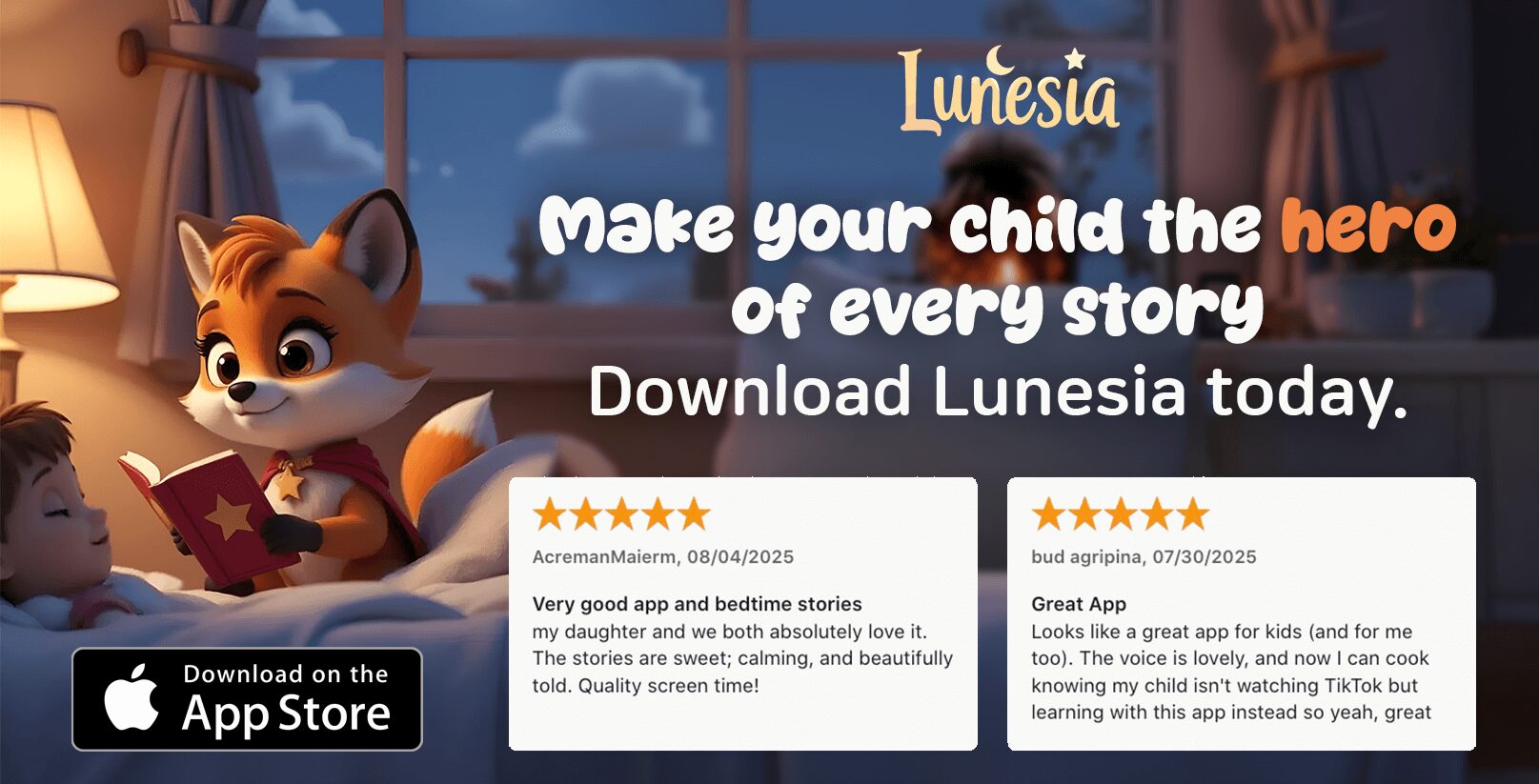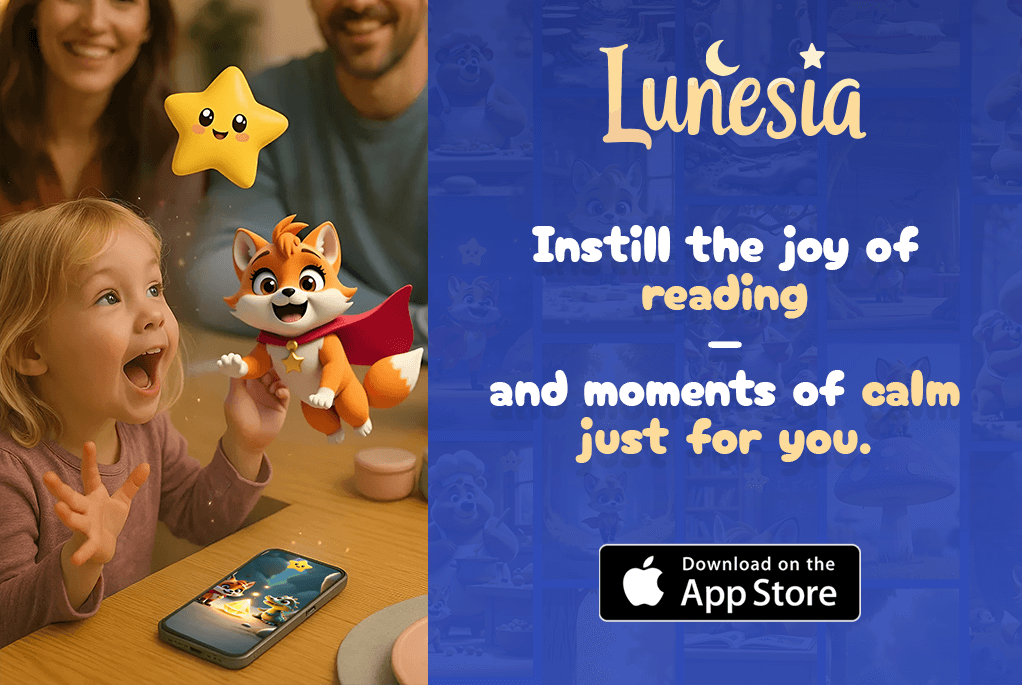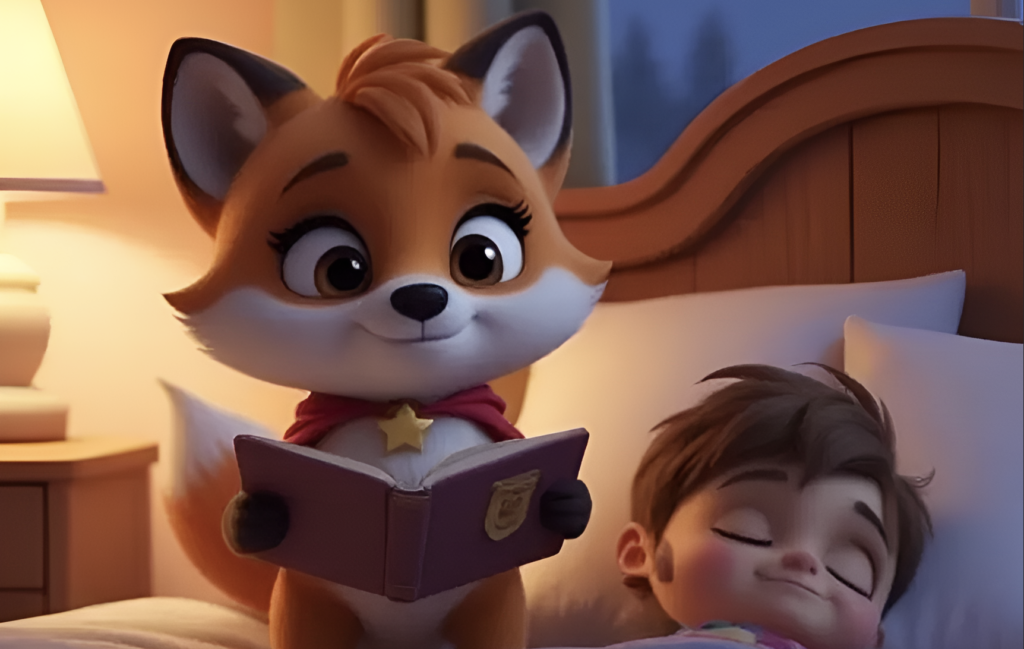As a parent, managing your children’s screen time can be a daunting task. With the rise of digital media, it’s easy to feel overwhelmed by the numerous options available. You want your kids to benefit from technology, but you’re concerned about the impact on their health.
Lunesia offers a revolutionary approach to transforming screen time into a positive experience. By providing enriching digital content that aligns with your child’s developmental needs, Lunesia helps you make the most of the time spent on screens. You can explore more about how Lunesia compares to other educational tools on apps like Lunesia.
By making informed choices about digital media use, you can create a healthier balance between technology and other aspects of your child’s life. Discover how Lunesia can help you achieve this balance and support your child’s emotional and cognitive development.
The Digital Dilemma: Understanding Today’s Screen Time Challenges
Children’s lives are increasingly intertwined with screen media, presenting both opportunities and challenges. As we navigate this digital landscape, it’s essential to understand the prevalence and impact of screen time on our children.
The Prevalence of Screens in Children’s Lives
The excessive use of screen media has become a global public health issue, particularly concerning the extensive screen exposure during very early childhood. Over the past few years, children of all ages have gained access not only to traditional screens like TVs but also to new screen technologies such as computers, tablets, smartphones, and gaming consoles.
Studies have shown that as children get older, they spend more time in front of screens, and the age at which they first start using screen media is getting younger. This trend is concerning because excessive screen time is linked to various health and developmental issues.
- Today’s children are growing up in a digital landscape where screens are integrated into nearly every aspect of daily life, from education to entertainment.
- The average child now has access to multiple devices, with screen time increasing with age and starting at younger ages than ever before.
- Parents face the challenge of navigating a world where digital media is both necessary for education and potentially harmful when consumed excessively.
- The COVID-19 pandemic accelerated screen dependency, with remote learning and social restrictions dramatically increasing children’s daily screen exposure.
- Unlike previous generations who primarily watched television, today’s children engage with interactive media across multiple platforms, creating new challenges for parental monitoring.
- The portability of modern devices means screen time can happen anywhere, making it harder for parents to track and limit usage compared to the family TV of previous generations.
https://www.youtube.com/watch?v=55ehUgkebaI
Understanding these challenges is the first step towards managing screen time effectively. By acknowledging the role of screens in our children’s lives, we can begin to explore ways to ensure that their screen time is both meaningful and healthy.
What is Lunesia Meaningful Screen Time?

Lunesia is redefining the concept of screen time for children by focusing on meaningful interactions rather than mere consumption. As a parent, you’re likely aware of the challenges of managing your child’s screen time. Lunesia offers a solution by transforming it into a valuable learning experience.
Lunesia’s approach to screen time is centered on quality rather than quantity. It’s not just about limiting screen time, but about making the most of it. By doing so, Lunesia supports cognitive, social, and emotional development in children.
Core Features and Philosophy
Lunesia’s philosophy is built on the belief that technology can be a powerful tool for learning and development. The platform is designed to engage children actively, encouraging critical thinking and creative problem-solving.
- Lunesia represents a paradigm shift in how we approach children’s digital consumption, focusing on quality interactions rather than passive viewing.
- At its core, Lunesia transforms screen time from a mindless activity into an enriching experience that supports cognitive, social, and emotional development.
- Unlike traditional screen time that often leads to zoning out, Lunesia’s content is designed to engage children actively, encouraging critical thinking and creative problem-solving.
- The platform is built on extensive research in child development, ensuring all content is age-appropriate and aligned with developmental milestones.
- Lunesia’s philosophy centers on the belief that technology, when thoughtfully designed and implemented, can be a powerful tool for learning rather than a distraction from it.
- Parents appreciate that Lunesia provides transparency about content and usage, allowing them to feel confident about the quality of their children’s screen experiences.
- The platform offers customizable profiles that grow with your child, adapting content to match their developing interests and abilities.
By focusing on meaningful screen time, Lunesia provides a valuable resource for parents seeking to make screen time a positive aspect of their child’s life. With its comprehensive approach to child development and commitment to quality content, Lunesia is setting a new standard for educational media.
The Science Behind Screen Time Impact on Child Development
Understanding the science behind screen time’s impact on child development is crucial for making informed decisions about your child’s screen use. As a parent, it’s natural to be concerned about how screen time affects your child’s physical health and overall development.
Numerous studies have shown that extensive screen exposure during early childhood can be harmful for cognitive development, social competences, mental health, and physical wellbeing. Prolonged screen use is linked to elevated risks of obesity, poor posture, and even disrupted sleep. The blue light emitted by screens suppresses melatonin levels, making it harder for children to fall and stay asleep.
Physical Health Effects
Research consistently shows that excessive screen time can impact children’s physical development, with concerns ranging from sedentary behavior to vision problems. Some key findings include:
- Studies have linked prolonged screen use to increased risks of obesity as children spend more time sitting and less time engaged in physical play.
- The blue light emitted from screens can disrupt melatonin production, affecting sleep quality and duration, which is crucial for healthy development.
- Children who spend excessive time on screens often report physical symptoms including eye strain, headaches, and poor posture leading to neck and back pain.
- Lunesia’s approach acknowledges these physical health concerns by incorporating movement breaks and encouraging proper ergonomics during screen use.
- Unlike passive screen time, Lunesia’s interactive content often encourages physical movement as part of the learning experience, helping to mitigate some sedentary concerns.
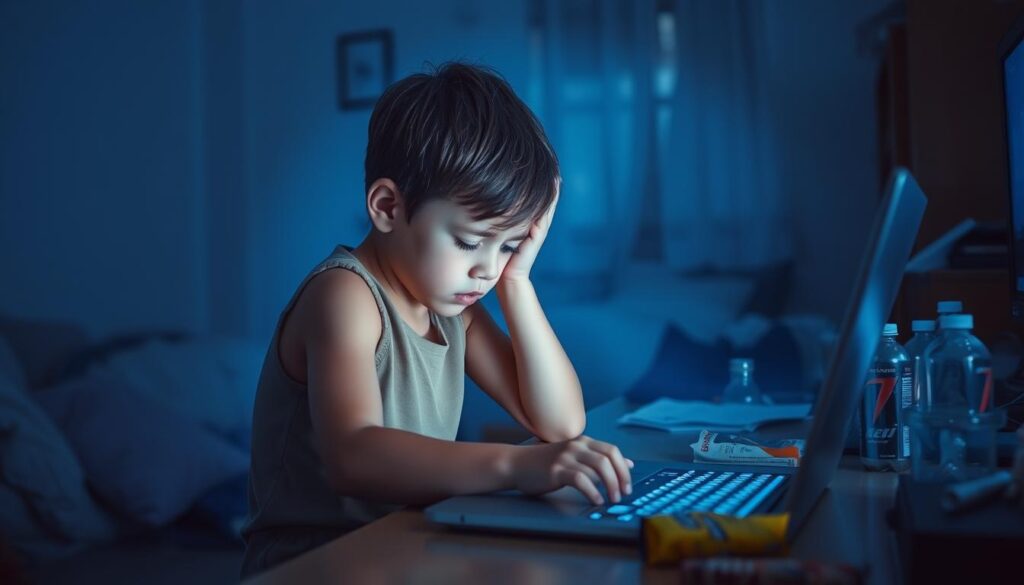
It’s clear that screen time may have significant implications for children’s physical health and development. By understanding these risks and taking proactive steps, such as incorporating movement breaks and promoting proper ergonomics, parents can help mitigate the negative effects of screen time. As we continue to navigate the digital landscape, it’s essential to prioritize our children’s health and wellbeing.
Age-Appropriate Screen Time Guidelines
The American Academy of Pediatrics (AAP) has provided clear guidelines on screen time for children, making it easier for parents to set healthy limits. Understanding these age-appropriate guidelines is crucial for promoting healthy development in children.
For children of different ages, the recommendations vary significantly. For infants and toddlers under 18 months, experts recommend avoiding screen media entirely except for video chatting with family members. As children grow, so do the recommendations for their screen time.
Recommendations for Toddlers and Preschoolers (0-5 years)
For children aged 18 months to 5 years, the AAP suggests limiting screen time to 1 hour per day of high-quality, educational programming. This content should be co-viewed with parents to help children understand and learn from the material.
- For children ages 2-5, 1 hour of high-quality educational content is recommended.
- Lunesia’s content is designed to align with these age-specific recommendations, offering appropriate engagement levels.
- For preschoolers, Lunesia focuses on interactive storytelling and simple problem-solving activities.
By following these guidelines and utilizing platforms like Lunesia, parents can ensure that their children’s screen time is both limited and meaningful. Lunesia clearly labels content by age appropriateness, making it easier for parents to choose suitable digital experiences.
As children enter the 6-12 years age group, it’s essential to encourage balanced daily habits, with a limit of 2 hours on recreational screen time. Emphasizing active play, homework, and real-world hobbies is crucial during this stage.
By understanding and implementing these age-appropriate screen time guidelines, parents can help their children develop healthy digital habits from an early age.
How Lunesia Transforms Regular Screen Time into Meaningful Experiences
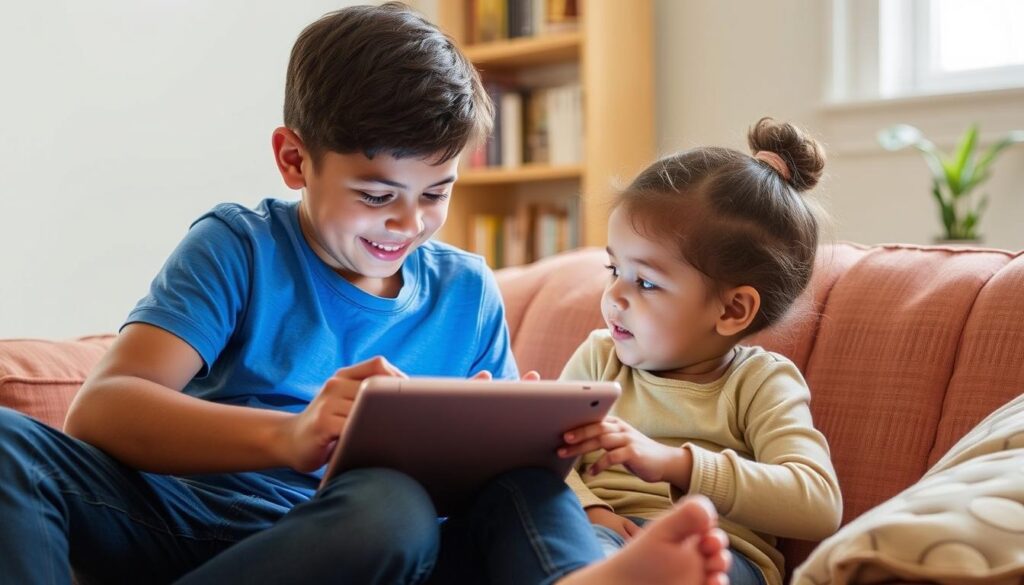
Lunesia is revolutionizing the way children interact with screens by turning ordinary screen time into extraordinary learning experiences. As a parent, you’re likely concerned about the impact of screen time on your child’s development. The good news is that with the right tools, recreational screen time can be transformed into educational opportunities.
Educational Content Integration
Lunesia’s approach to screen time is centered around making learning fun and interactive. By embedding educational content within engaging experiences, Lunesia ensures that children enjoy their screen time while developing crucial skills.
- Lunesia stands apart from traditional screen time by embedding educational content within engaging experiences that children genuinely enjoy.
- The platform seamlessly integrates core academic concepts into interactive stories and games, making learning feel like play rather than work.
- Unlike passive consumption of videos or games, Lunesia requires active participation, encouraging children to think critically, make decisions, and solve problems.
- Content is designed by education specialists who understand both child development and effective teaching methodologies.
- Lunesia’s adaptive technology recognizes each child’s learning patterns and adjusts content difficulty accordingly, providing just the right level of challenge.
- The platform incorporates multiple learning styles—visual, auditory, and kinesthetic—ensuring children with different preferences can engage meaningfully.
- Parents receive regular updates about concepts their child has explored, along with suggestions for extending learning through real-world activities.
- By transforming recreational screen time into educational opportunities, Lunesia helps families maximize the value of the time children spend with technology. Visit Lunesia to learn more about how you can make a positive impact on your child’s development.
Implementing Lunesia in Your Family’s Digital Routine
Making the switch to Lunesia is easier than you think, and it’s designed to make screen time more meaningful. As you start this journey, you’ll find that Lunesia is crafted to be intuitive and simple for both you and your children.
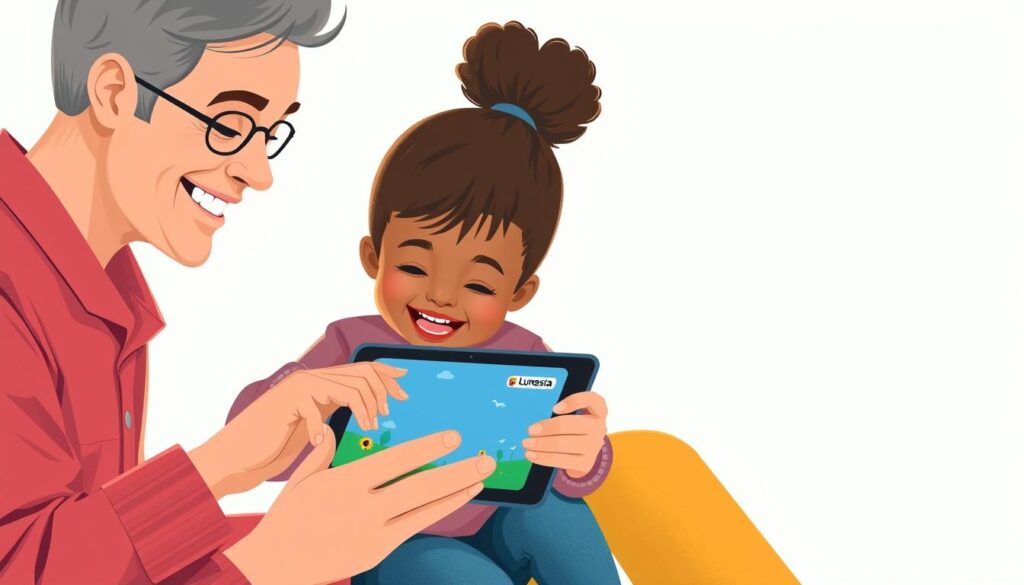
Getting Started with Lunesia
To begin your Lunesia experience, follow these straightforward steps:
- Transitioning to Lunesia is designed to be simple for both parents and children, with an intuitive setup process that takes just minutes.
- Begin by creating individual profiles for each child, allowing the platform to customize content based on age, interests, and learning needs.
- Set clear expectations with your children about when and how Lunesia will be used in your home—whether as a replacement for other screen time or as a special learning activity.
- Start with short sessions (15-20 minutes) to help children adjust to the more engaging and interactive nature of Lunesia compared to passive screen time.
- Use Lunesia’s parent dashboard to establish time limits and content preferences, giving you control while still allowing children to make choices within those boundaries.
- Consider scheduling Lunesia time during transitions or moments when you need to accomplish tasks, knowing your child is engaged in quality content.
- Introduce Lunesia as a special opportunity rather than a restriction, helping children view it as an exciting addition to their routine rather than a replacement for favorite shows.
- Take advantage of Lunesia’s co-play options for younger children, using this as quality time to connect while supporting their digital learning journey.
By following these steps, you can seamlessly integrate Lunesia into your family‘s digital routine, making the most of your child’s screen time and fostering a healthier approach to technology use. For more information on managing screen time for children, visit https://lunesia.app/screen-time-for-children/.
Real Parents Share: Success Stories with Lunesia
Many parents have found solace in Lunesia, transforming their children’s screen time into a valuable experience. By providing a platform that combines education and interaction, Lunesia has become a trusted ally for parents seeking to make screen time more meaningful.
The impact of Lunesia on family routines has been significant. Parents are reporting a reduction in screen time battles and an improvement in their children’s behavior. For instance, Sarah, a mother of two preschoolers, shares how Lunesia transformed their morning routines: “My kids used to throw tantrums when screen time ended, but with Lunesia, they’re satisfied after their session and transition easily to other activities.”
Overcoming Screen Time Battles
One of the most significant challenges parents face is limiting recreational screen time. Lunesia’s interactive approach has been particularly beneficial for children with ADHD. Michael, father to a 7-year-old with ADHD, found that Lunesia kept his son engaged in ways traditional media couldn’t: “The constant interaction and feedback loops help him stay focused for the entire session.”
- Many parents report that the quality of their children’s play has improved since introducing Lunesia, with kids incorporating concepts from the platform into their offline activities.
- Parents of multiple children appreciate how Lunesia adapts to different ages and interests, allowing siblings to enjoy quality screen time together.
- Several families noted improved bedtime routines after replacing stimulating entertainment content with Lunesia’s calming wind-down activities.
As Jennifer, a mother of a 5-year-old, explains, “The guilt I felt about screen time disappeared once I saw my daughter applying what she learned on Lunesia to her real-world problem-solving.” By making screen time more productive, Lunesia is helping parents limit recreational screen time and improve their children’s overall behavior.
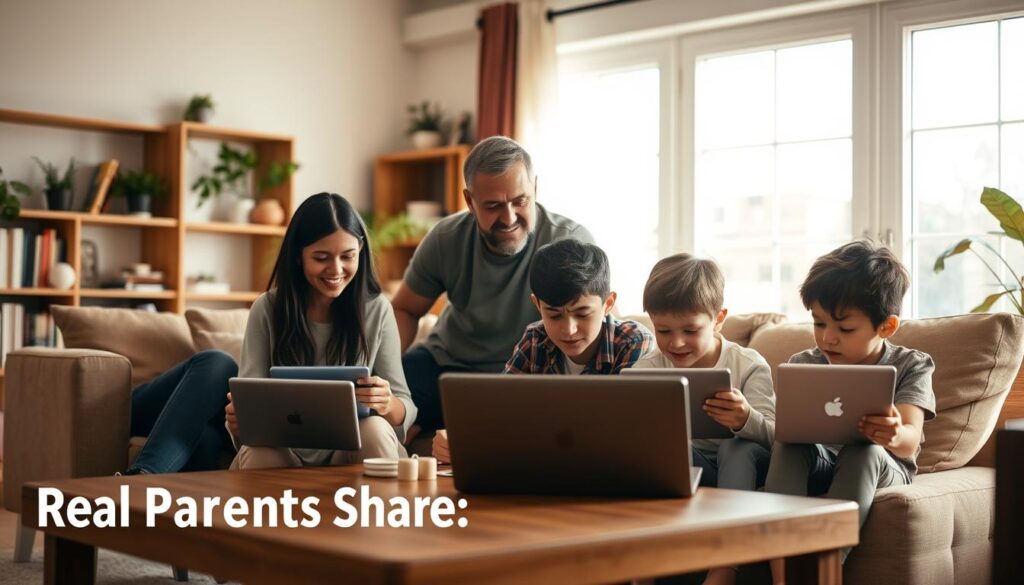
The data shows that children using Lunesia typically spend less time on screens overall, as the quality of the experience satisfies their digital interests more efficiently than passive viewing. By reducing screen time battles and improving behavior, Lunesia is making a positive impact on families.
Complementary Strategies for Healthy Digital Habits
While tools like Lunesia offer a more meaningful screen time experience, complementary strategies can further enhance our children’s digital habits. It’s about creating a balanced digital environment that supports overall well-being.
To achieve this balance, consider implementing several key strategies. First, establishing tech-free zones in your home can significantly reduce unnecessary screen time. Designate areas like the dining table or bedrooms as screen-free spaces to encourage family connection and relaxation without digital distractions.
Creating Tech-Free Zones and Times
Creating tech-free zones is just the beginning. It’s also important to schedule screen breaks and establish times when screens are not allowed. Encourage your kids to follow the ’20-20-20 rule’: every 20 minutes of screen use, take a 20-second break to look at something 20 feet away to reduce eye strain.
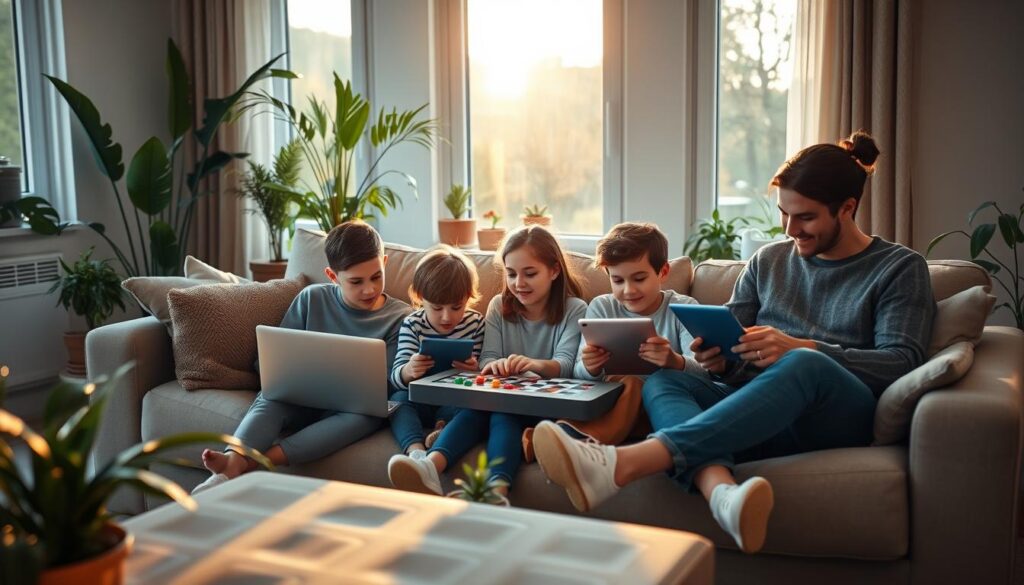
Other effective strategies include creating a family media plan that outlines when, where, and how much screen time is appropriate for each family member. Modeling healthy digital habits yourself is also crucial, as children learn more from what you do than what you say about screen time limits. For more guidance on managing screen time, you can explore resources like Lunesia’s screen time management tips.
- Establish tech-free zones in your home, such as dining areas and bedrooms.
- Implement the 20-20-20 rule to reduce eye strain during screen time.
- Create a family media plan that includes guidelines for screen time.
- Model healthy digital habits by limiting your own recreational screen time.
- Incorporate regular outdoor time and physical activity into your family routine.
- Consider implementing a “digital sunset” where all screens are turned off 1-2 hours before bedtime.
By combining these strategies with the quality screen time experience provided by Lunesia, you can help your children develop healthy digital habits that will benefit them in the long run.
Conclusion: Embracing Technology Without the Guilt
Parenting in the digital era requires a balanced approach to screen time. As we’ve explored, Lunesia offers a solution that transforms digital consumption into a meaningful experience for children. By choosing meaningful screen time, parents can ensure that the time spent on screens supports their children’s development, rather than detracting from it.
The key is being intentional about the quality of content and the context in which children engage with digital media. With Lunesia, parents are empowered to make informed choices, providing transparency and control over digital experiences. This approach not only supports physical health but also mental health by promoting a balanced digital lifestyle.
By focusing on quality over quantity, parents can feel confident that screen time is a positive force in their children’s lives, supporting their overall development and wellbeing. As we move forward, it’s clear that technology will continue to play a significant role in our children’s futures.
FAQ
How much recreational screen time is recommended for children?
For children ages 2 to 5, limit recreational screen time to 1 hour per day of high-quality educational programming. For kids aged 6 and older, place consistent limits on screen time, making sure that it does not interfere with physical activity, sleep, and other activities.
What are the effects of excessive screen time on children’s physical health?
Excessive screen time is associated with a range of physical health issues, including obesity, sleep deprivation, and eye strain. Encouraging active play and limiting screen time can help mitigate these risks.
How can I ensure my child’s screen time is used for learning?
To maximize learning, choose high-quality, educational content, and engage with your child during screen time. This can include discussing what they’re watching or playing, and using digital tools that promote interactive learning.
What strategies can help my child develop healthy digital habits?
Establishing tech-free zones and times, such as during meals or before bed, can help. Encourage physical activity and other hobbies to maintain a balance between screen time and other aspects of life.
How can I monitor and control my child’s screen time effectively?
Setting clear limits and using parental controls on devices can help monitor and manage screen time. Regularly reviewing screen time reports and having open conversations with your child about their digital habits can also be beneficial.
Are there any benefits to screen time for children?
Yes, when used appropriately, screen time can be a valuable tool for learning and development. Educational apps, games, and programs can enhance cognitive skills, promote creativity, and offer access to a wealth of information.
How does screen time impact children’s mental health?
Excessive screen time has been linked to increased risks of anxiety, depression, and other mental health concerns in children. Monitoring screen time and encouraging a balanced lifestyle can help support mental well-being.

